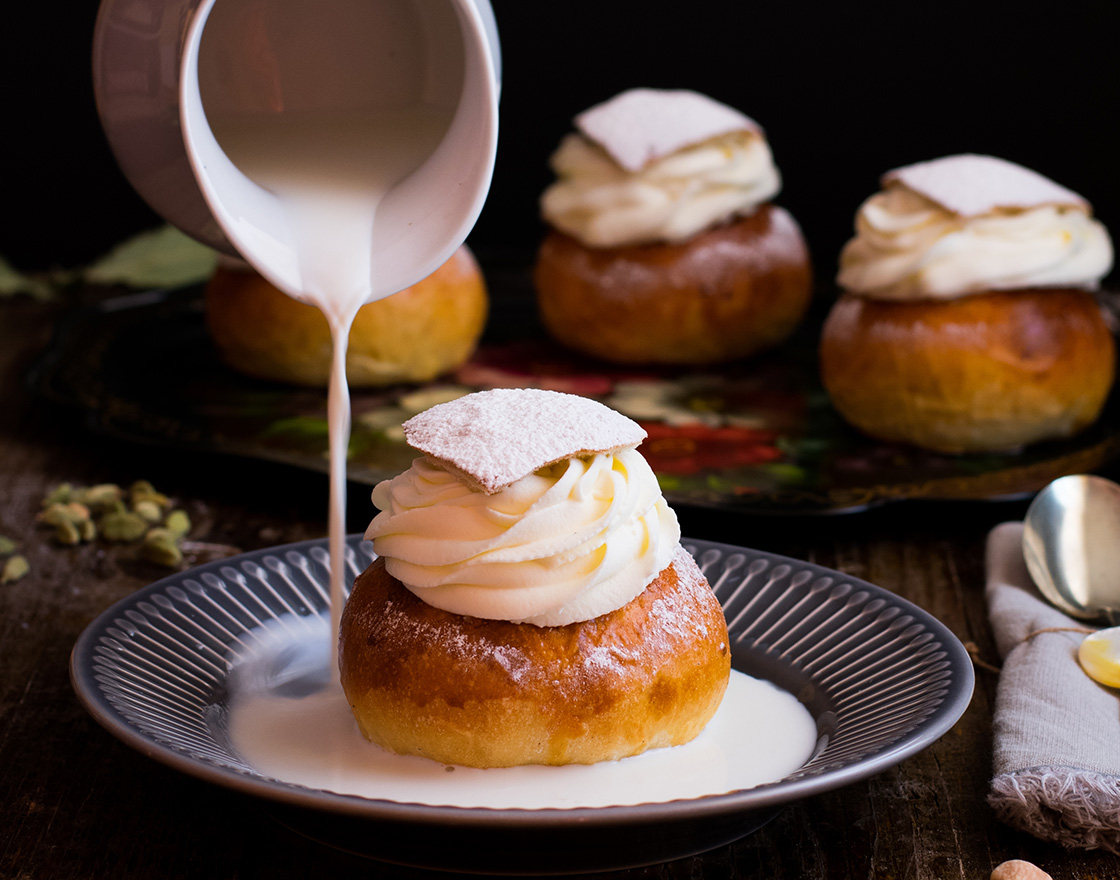
Stories from the north
Fettisdagen – day of the cream bun
Fettisdagen is translated as ”fat Tuesday” ans has its roots way back in Swedish history. Today, it’s a loved and celebrated tradition where the beloved cream bun ”semla” can be found at every café.
What is a semla?
The cream bun called ”semla” is a fluffy bun made of wheat, spiced up with cardamom. The bun is split and the inside is filled with a soft marzipan paste, and topped off with fluffy, whipped cream. The top of the split bun is placed on top of the cream and sprinkled with powdered sugar.
It’s the bakery goods of bakery goods, and many Swedes have personal preferences on how the bun should be assembled. Some like more or less of the marzipan paste – some want whole pieces of almonds – and some like to eat the bun in a bowl of warm milk: a so-called ”hetvägg”.

The history of Fettisdagen
The reason for the bun’s existence is that people needed to ”fat up”, and eat before the traditional fasting. The fasting occurred before the Easter holidays, and after Christmas, and today it’s celebrated in February.
The first written notice of semla in Sweden was made around the year 1670. Back then it was a dry wheat bun that might have been filled with raisins and nuts, ans it needed to be boiled in hot milk for several hours in order to make it edible. But it wasn’t until the late 1800’s that the bun became more common in every home, since wheat flour had been a luxury good for centuries.

